Old Babylon Library/ Babylon Village Historical Society Museum
Introduction
Text-to-speech Audio
Images
Old Babylon Library's front facade in 2015 photo (DanTD)
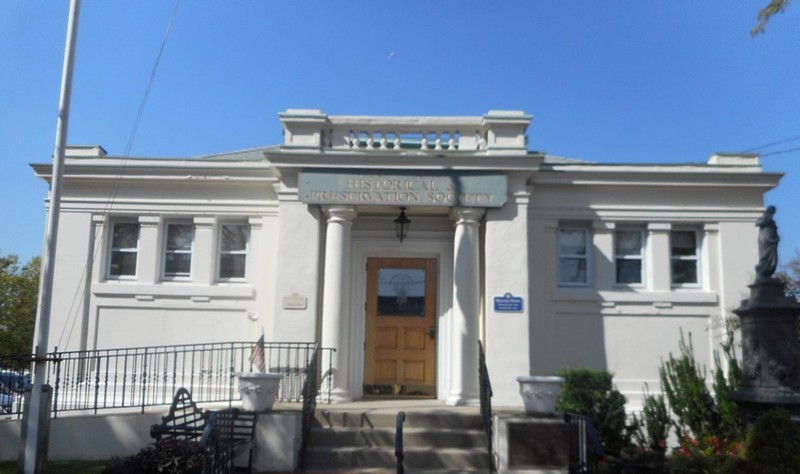
Sketch of proposed Babylon Library building from local newspaper 1910
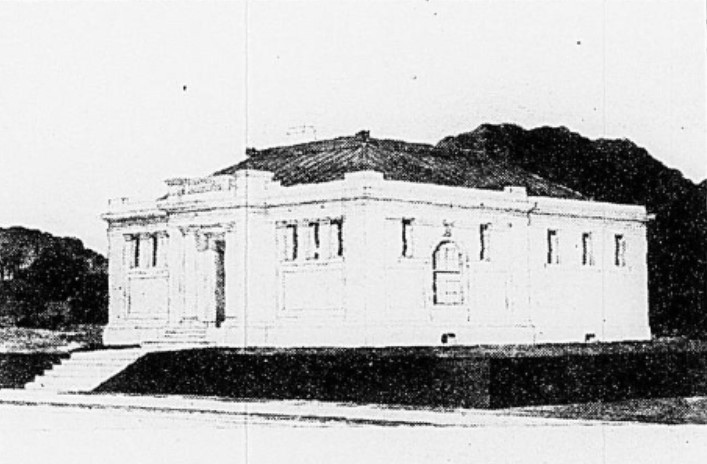
Photo by Stanley M. Aldrich of the newly-completed library in August 1911, next to the Baptist lecture room
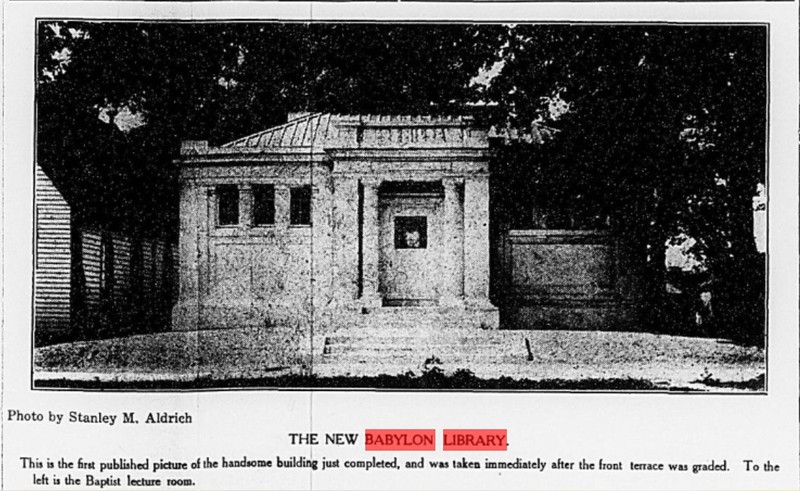
Photo of the Main Reading Room of the newly-opened library in October 1911 by Mott
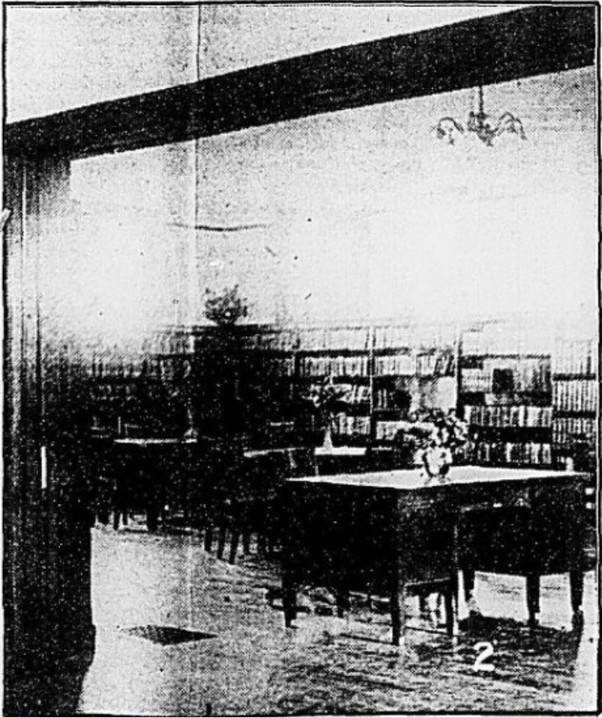
Photo of the Children's Corner in the newly-opened library in October 1911 by Mott
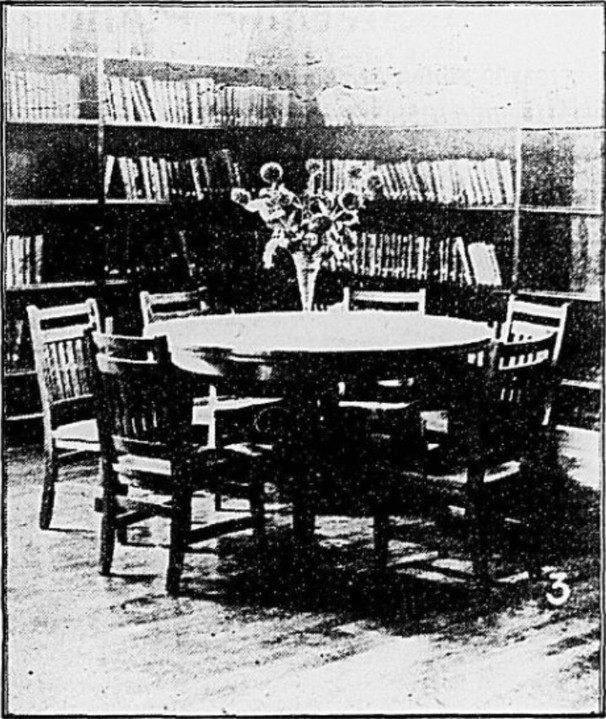
Front of Old Babylon Library with seasonal decorations in early 2015 photo for NRHP (by Apmann & Kennedy)
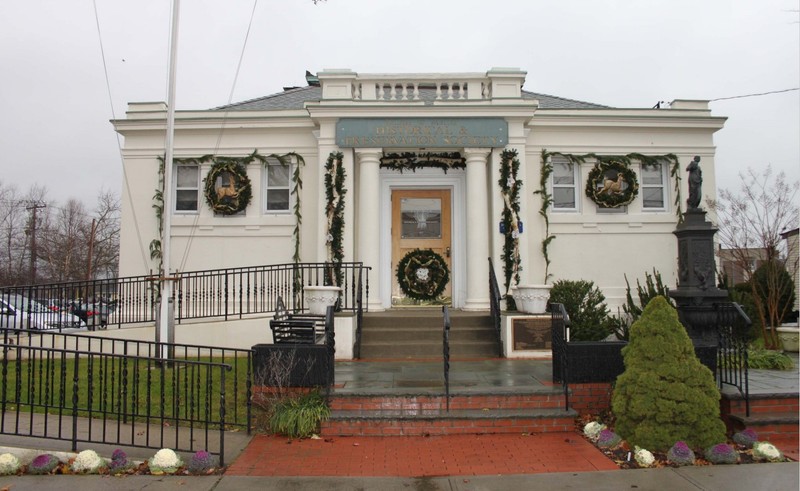
View of side of Old Babylon Library from parking lot in 2015 photo for NRHP (by Apmann & Kennedy)
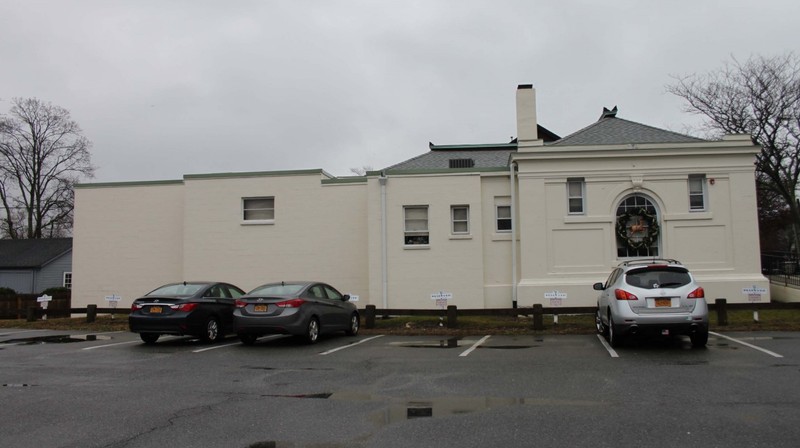
View of interior of Reading Room with museum exhibits in 2015 for NRHP (by Betsworth)
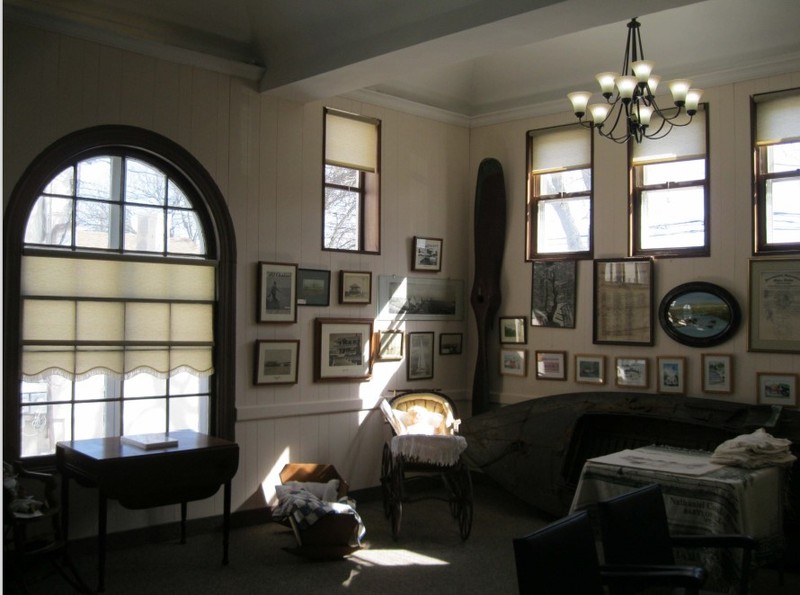
Backstory and Context
Text-to-speech Audio
The Babylon Book Circle was formed around 1890 by several local women: Mrs. Thomas B. Arnold, Miss Louise Sammis and Miss Loreign Reid. The members of the Circle paid $3 dues and bought books which were moved from house to house. A room was donated by D.S.S. Sammis to house the books at the back of the Sammis Block building behind the telegraph office. Later, a room was leased in the Woman's Exchange on Deer Park Avenue. Finally, two rooms were donated in the Fishel Block building, courtesy of L.H. Fishel. By 1910, the collection held about 4,000 books overseen by volunteer librarians three mornings per week.
The Babylon Library Association released a sketch of the proposed library building that was printed in the local newspaper in September 1910 (see images). Another $1,500 needed to be raised to reach a goal of $6,000. The proposed building "of monumental design" was to be covered in stucco and was touted as an "ornament to the village." The public was urged to donate to upgrade the walls from wooden to terra cotta blocks to become completely fireproof. The proposed standing seam metal roof would be upgraded from tin to copper if enough funds were secured. The building was to be constructed on a terrace about four feet above existing ground level, on land donated by the Livingston family. A hot air furnace was donated to the library and the architect was Arthur D. Pickering of the firm Pickering and Walker of Park Avenue, New York City.
The contract to build the new library was awarded in November 1910 to Ellner W. Howell for a bid of $6,835. On August 11, 1911 the local newspaper published a photo of the front of the newly-built library taken right after the front lawn was graded (see images). The photographer claimed this photo to be the first taken of the new library. A hipped roof covers the original part of the building, which was L-shaped in plan; the rear addition has a flat roof. The original entrance steps were replaced by new concrete steps and a ramp in 1992. The wooden door in the main entrance is not original and is flanked by simple Tuscan columns. A blue tablet above the entrance now reads "Village of Babylon Historical & Preservation Society." The vaulted ceilings in the original parts of the building have been replastered and restored. There are five main areas in the old part of the structure which have been retained, separated by partitiion walls: a small entry vestibule, the main reading room, two alcoves leading to the main reading room, and the reception or children's room. The 1964 addition on the north (rear) side of the original library enlarged the reading room and public areas and added a fireproof vault encased in concrete to hold rare materials. The original fireplace in the reception room used to have small bathrooms on either side of the fireplace; the spaces are now a storage closet and a kitchen, after the bathrooms were moved to the addition in 2008.
Sources
Anonymous. "The New Library Building Plans." South Side Signal (Babylon, NY) September 23rd 1910. 1-1.
Anonymous. "Island News Notes." Suffolk County News (Sayville, NY) December 2nd 1910. 6-6.
Anonymous. "Local Library is Formally Opened." South Side Signal (Babylon, N.Y.) October 27th 1911. 1-1.
Babylon Village Historical & Preservation Society. About the Babylon Village Historical Society Museum, About Us. January 9th 2019. Accessed May 19th 2021. https://babylonvillagehistoricalsociety.org/aboutus.html.
Kennedy, Karen A. Apmann, Sarah Bean. NRHP Nomination of The Babylon Library, Babylon, N.Y.. National Register. Washington, DC. National Park Service, 2015.
https://commons.wikimedia.org/wiki/File:Babylon_Historic_Library-2.JPG
South Side Signal, Babylon, N.Y., Sept. 23rd 1910, p. 1
South Side Signal, Babylon, N.Y., Aug. 11th 1911, p. 1
South Side Signal, Babylon, N.Y., Oct. 27th 1911, p. 1
South Side Signal, Babylon, N.Y., Oct. 27th 1911, p. 1
New York State Cultural Resource Information System (NYS CRIS): https://cris.parks.ny.gov/Default.aspx
NYS CRIS: https://cris.parks.ny.gov/Default.aspx
NYS CRIS: https://cris.parks.ny.gov/Default.aspx
